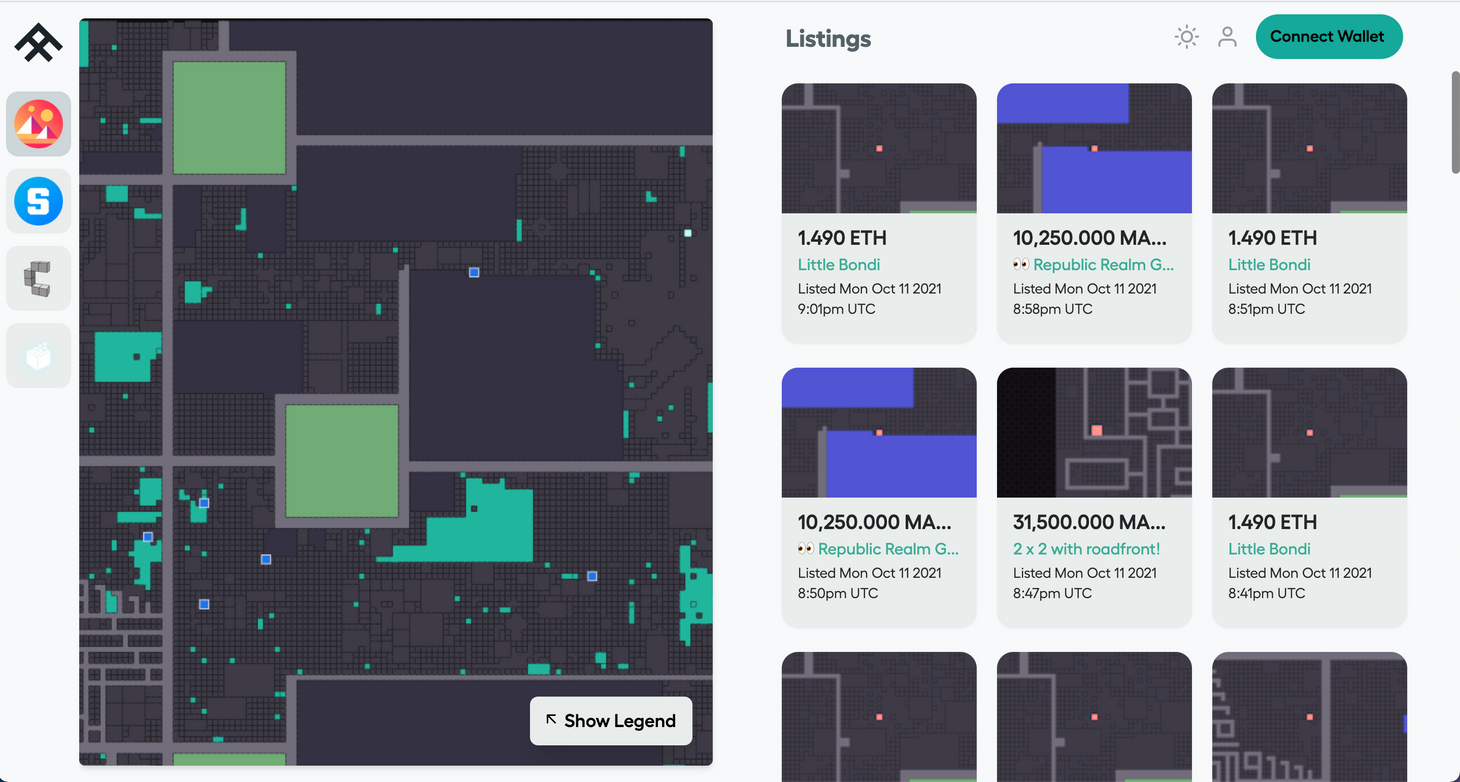Zillow for NFT Land – A Marketplace for Land in the Metaverse

There’s something to be said about the next land barons being manifested right now in decentralized virtual worlds. While it’s difficult to track whether or not the entire market of land in Decentraland or Cryptovoxels is appreciating, virtual land NFTs have been on a quiet climb.
And I recently came across a tool for finding land in any of the main virtual worlds.
Zillow for the Metaverse
Parcel is a platform that is billing itself as “Zillow for the Metaverse”. First of all, great idea. Generally speaking for all NFTs, there is a need for tools to help identify and compare assets.
Parcel makes it easy to find virtual land for sale, compare it with nearby land values, and make a purchase directly on their platform.
Parcel’s platform aggregates land for sale in these four virtual worlds:
- Decentraland
- The Sandbox
- Cryptovoxels
- Somnium Space
Having the ability to browse land between multiple virtual worlds all in one place is a nice benefit. This means you’re not juggling between different marketplaces. Whether that land is being sold on OpenSea or on Decentraland’s marketplace, the asset shows up in Parcel.
Additionally, once you click on a given plot you’re interested in, they also offer an estimated appraisal on the land – which they’ve partnered with NFT Bank to provide.
Almost all plots have an appraisal, which means you can look at what the surrounding plots are valued at in comparison to what you may invest.
Beyond that, the current functionality of Parcel is limited. However, I see the vision. I see that they’re actively hiring a team of devs. And I see that they could be something much bigger in a year from now.
How It Evolves
There are two signals Parcel has provided on how they plan to make the tool better. And that is providing information about the “Neighborhood” and “Traffic” for each plot of land.
Traffic, in this case, is a good thing. You want to be closer to roads and districts in these virtual worlds, as it means you’re closer to where the people are. And thus, your land is more valuable for businesses that want to build on your land.
Neighborhood could point to the notable estates or sights in the area. Perhaps they could go as far as listing other landowners nearby (who wouldn’t want to know they own land near an NFT whale).
One area that I could see Parcel building upon in the future would be showcasing the architecture built on plots of land (when applicable). While there aren’t many people buying virtual land based on the estate that’s been built on it, I doubt it will be this way forever.
There are numerous creators who are branding themselves as virtual architects, designing and building structures for virtual worlds. Some of these virtual architects include:
Houses or buildings from these virtual architects may one day become highly sought-after. Furthermore, their creations may come to be more valuable than the virtual land they’re built on. And if Parcel could highlight plots of land that feature this sought-after architecture, they may find themselves being a valuable tool.
While it may not live up to the Zillow name today, Parcel has the positioning to make a real impact on the virtual real estate market.
Ready to Learn About NFTs?
Join 11,000+ readers of NFT QT, a weekly newsletter packed with tips and actionable insights for people fascinated with NFTs just like you.
